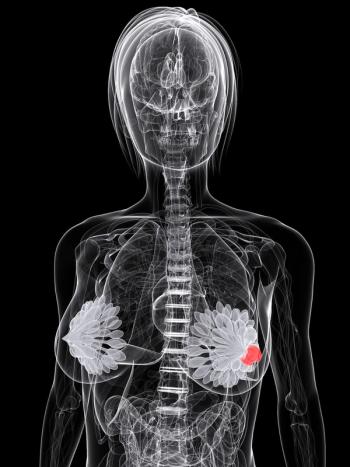
Oncology NEWS International
- Oncology NEWS International Vol 9 No 5
- Volume 9
- Issue 5
Saving the Rectum With Presurgical Radiation Therapy
ORLANDO-“There are still too many rectums being removed in patients with invasive rectal cancer,” said W. Robert L. Rout, MD, associate professor of surgery, University of Florida, Gainesville. He believes this situation could be improved with the use of preoperative radiotherapy and chemotherapy.
ORLANDOThere are still too many rectums being removed in patients with invasive rectal cancer, said W. Robert L. Rout, MD, associate professor of surgery, University of Florida, Gainesville. He believes this situation could be improved with the use of preoperative radiotherapy and chemotherapy.
A number of surgeons do not use preoperative radiation therapy for rectal cancer, even though it can save the rectum and spare the patient from the need for a colostomy, Dr. Rout said at the Joint Cancer Conference of the Florida Universities. And for most patients, preoperative radiation therapy and chemotherapy also improve survival.
Dr. Rout stressed the collaborative nature of the cancer care given at his institution, which contributes to their success rates. Our surgeons work on a team with the radiation oncologists and with the medical oncologists to provide the maximum benefit to patients. Being a tertiary care center, he said, his institution sees a population that includes a lot of patients that others have given up on.
He described the radiation treatment regimen used at the University of Florida: For tumors that are early, movable, not ulcerated and thought to be T2 or T3, patients receive 50.4 Gy as the total preoperative tumor dose. The treatment is given in 28 daily fractions with a boost at the end.
The radiologists target fields that include the primary tumor volume and the draining lymphatic vessels, including the internal/external iliac system and the distal common iliac. The boost covers the sacrum coccygeal area as well as the tumor volume.
All patients also receive continuous circadian rhythm chemotherapy with fluorouracil, 225 mg/m²/d, plus leucovorin, 20 mg/m²/d, administered via a programmable infusion pump.
With such pretreatment, tumors often shrink dramatically, Dr. Rout said. Often when we operate on these patients, we find no tumor remaining, so we just cut out the scar. Or there may be a small tumor left, a T1 or T2 grade tumor.
Articles in this issue
over 25 years ago
HRT Not Associated with Lower Survival After Breast Cancerover 25 years ago
Age No Contraindication to High-Dose Therapy in Myelomaover 25 years ago
ASCO Urges Passage of Patient’s Bill of Rightsover 25 years ago
RT Not Necessarily an Impedance to Breast Reconstructionover 25 years ago
New Adjunctive Regimens for Breast Cancer Treatment Are Under Studyover 25 years ago
NCCN Prostate Cancer Practice Guidelines Revisedover 25 years ago
ERT Does Not Increase Endometrial Cancer Recurrenceover 25 years ago
Radiochemotherapy/Transplant in Low-Grade Lymphomasover 25 years ago
Fish Oil Supplements May Improve Cancer Therapies’ Effectivenessover 25 years ago
Study of Dying Cancer Patients Reveals Importance of RitualsNewsletter
Stay up to date on recent advances in the multidisciplinary approach to cancer.
















































































